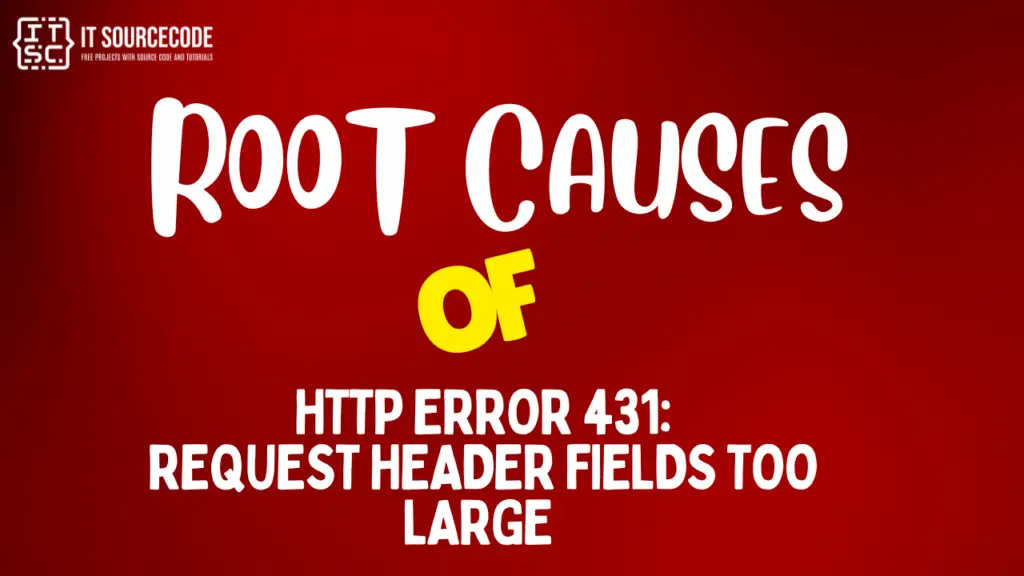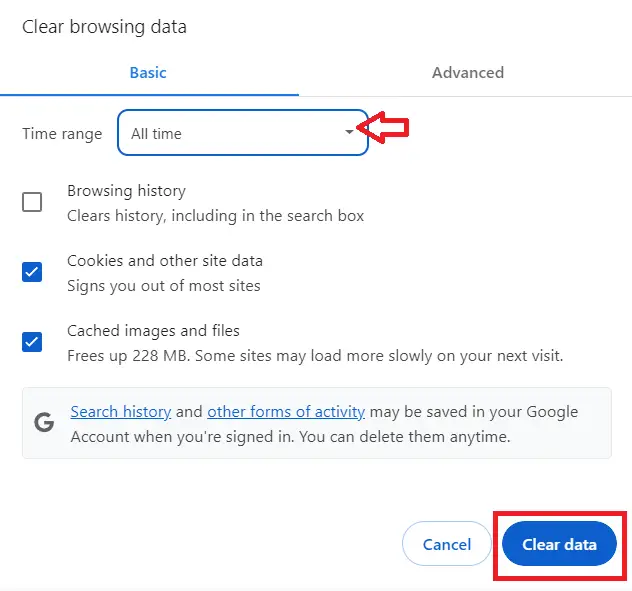In this article, we will walk you through the process of resolving the HTTP error 431, which returns the status code: “Request Header Fields Too Large”.
HTTP errors are designed to provide insights into the interaction between your device and a web server.
However, these codes were primarily intended for developers, not for average users.
This is mainly because even experts can find certain codes, like this one, perplexing.
Resolving the HTTP 431 error is easy once you know what to address. We’ll guide you through the process.”
What is HTTP Error 431?
The HTTP Error 431, also known as “Request Header Fields Too Large”, is a status code indicating that the server is unable to process the request due to the size of the HTTP headers that are too long.
The request can be attempted again after reducing the size of the request headers.
The 431 status code can be employed when the request headers’ overall size is too large or a single header field is excessively long.
To assist those encountering this error, it’s helpful to specify in the response body whether the issue lies with the total header size or a specific header field.
If possible, also identify which headers are too large. This information enables users to address the issue, for instance, by clearing their cookies.
This error typically originates from the client’s side, not the server. It specifically highlights an issue with the size of the request’s header fields.
Root Causes of HTTP Error 431

Typically, HTTP error codes can signal an issue in one of two places:
Server-side
An issue on the web server is causing the error code.
Client-side
A problem in the web browser is causing the error.
The HTTP 431 error is a client-side HTTP error. This implies that the root of the problem lies within your web browser (since your web browser is the one sending the request with large headers).
Consequently, most solutions will involve making adjustments to your web browser.
Moreover, the most frequent triggers of HTTP Error 431 include:
Excessive cookies:
An overload of cookies in the request can lead to the display of the HTTP error 431 instead of the intended content.
Lengthy referrer URL:
A referrer URL that is too long can also activate the HTTP 431 error.
The large total size of request headers:
If the combined size of the request headers is too large, it can result in the HTTP 431 error.
How to fix 431 Request Header Fields Too Large? Solutions

Here are some strategies to address the HTTP 431 error:
Solution 1: Clear Your Browser Cache and Cookies
Browser cache and cookies are a common solution to this issue.
Cookies can sometimes become large enough to reach the server’s limit, causing the HTTP 431 error.
Clearing the cache and cookies can resolve these issues.
If you use Google Chrome, here’s how to clear its cache and cookies:
- Click the three dots in the top-right corner of your window. You can also use the keyboard shortcut (Ctrl + H).
- Go to History History.
- Click on Clear Browsing Data.

- A new window will appear. Choose the Time range, if you wish to erase all data, select All Time.

- Select what you’d like to clear- this could be browsing history, cookies, and other site data, or cached images and files.
- Then, hit the Clear Data button.
If you use Mozilla Firefox, here’s how to clear its cache:
- Click on the three lines at the top right corner of your browser.
- Go to “Options”, and select “Privacy & Security”.
- Then click “Clear Data” under the “Cookies and Site Data” section.
- You can also use the shortcut Ctrl+Shift+Delete (or Command+Shift+Delete on a Mac).
If you use Safari, here’s how to clear its cache:
- Click on “Safari” in the top menu.
- Then select “Clear History”.
Solution 2: Reduce the Referrer URL
Shorten the Referrer URL If the referrer URL is too long, it can also cause the HTTP 431 error.
In this case, reducing the length of the referrer URL can help eliminate the error.
This can be done by removing unnecessary parameters or shortening the URL path.
Solution 3: Modify Cookie Settings
Your website could be the source of HTTP 431 errors if it’s improperly utilizing cookies.
For instance, if your site is creating an abundance of cookies in users’ browsers, it could lead to an error.
This is why one of the suggested solutions is to clear the site’s cookies.
To prevent this, ensure your site isn’t inadvertently creating too many cookies.
This might necessitate examining your site’s code or engaging the services of a qualified professional.
Solution 4: Review Your Code
Check Your Code If there are issues in your code that are causing the headers to become too large, rectifying them can help alleviate the HTTP 431 error.
This could involve checking for loops that are adding to the headers, or functions that are unnecessarily adding large amounts of data to the headers.
These are solutions that can be implemented on the client side.
If you’re a website owner and these solutions don’t work, you might need to increase your server configuration’s maximum allowed header size.
Remember:
The solutions above are just potential solutions. The effectiveness of each solution may vary depending on the specific circumstances causing the error.
Conclusion
The HTTP Error 431, also known as “Request Header Fields Too Large”, is a status code indicating that the server is unable to process the request due to the size of the HTTP headers that are too long.
The request can be attempted again after reducing the size of the request headers.
By implementing the solutions provided above, you can confidently address and resolve this issue.
I hope this article helps you rectify this error.
For further learning, you can also check the following HTTP status code:

